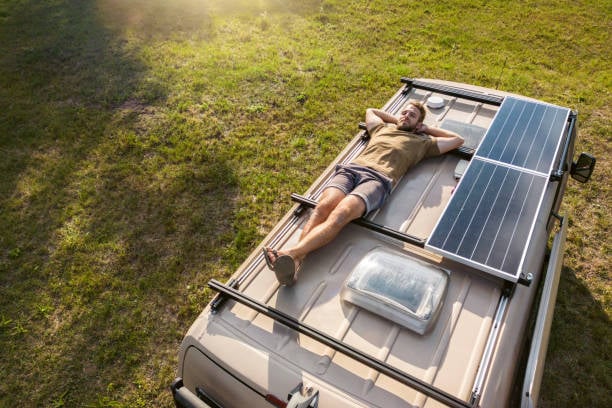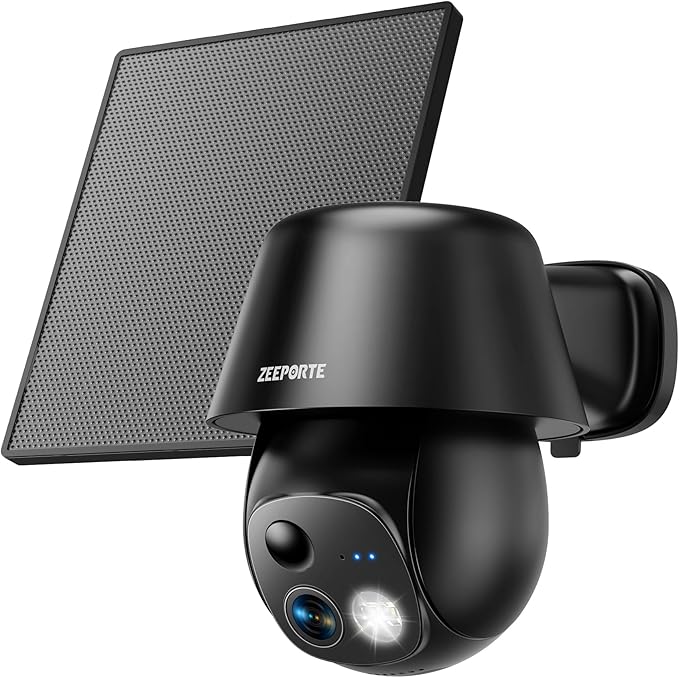Dreaming of cruising down the highway, windows down, music on, and no generator noise in the background? That's the magic of going solar in your RV. But here's the million-dollar question — or rather, the thousand-dollar one — how many solar panels do you really need for your home on wheels?
Whether you're a weekend road-tripper or a full-time nomad, the answer isn't just a random guess. It depends on your RV's energy appetite, the size of your panels, and even where you park. In this 2025 guide, we'll break down the numbers in plain English, share practical tips, and help you figure out the perfect solar setup for your adventures.
Why Go Solar in an RV in 2025?
Before we crunch the numbers, let's talk about why solar is more popular than ever in the RV world:
Energy Independence
No more searching for hookups or relying on noisy generators.
Lower Long-Term Costs
While the upfront cost can sting, solar pays for itself in fuel and campground savings.
Eco-Friendly Travel
Zero emissions and zero guilt.
Tech Upgrades
In 2025, panels are lighter, more efficient, and easier to install than ever before.
Step 1: Calculate Your RV's Daily Power Usage
Here's the deal — solar panel sizing starts with knowing how much energy you use. Think of it like meal planning; you don't go grocery shopping without a list.
Follow These Steps:
- List all electrical devices you use daily: lights, fridge, microwave, phone chargers, laptops, water pump, etc.
- Check their wattage (usually found on a label or in the manual).
- Estimate usage time for each device.
- Multiply wattage by hours used to get watt-hours (Wh).
📊 Example Calculation:
Step 2: Understand Solar Panel Output
Solar panel sizes vary, but in 2025, the most common RV-friendly panels are between 100W and 200W.
A 100W panel typically produces:
About 300–500Wh per day in sunny conditions.
Quick Calculation:
If you need 1,500Wh daily:
1,500 ÷ 400 = 3.75 panels → round up to 4 panels (100W each)
Step 3: Factor in Real-World Conditions
Solar output isn't constant. Weather, shade, season, and even dirt on your panels can affect performance.
Here's what to consider:
📍 Location
Arizona sun vs. Oregon drizzle? Huge difference.
❄️ Season
Winter sunlight hours are shorter.
📐 Mounting Angle
Flat-mounted panels produce less than tilted ones.
⚡ Efficiency Loss
Assume 20% less than the ideal rating.
Pro tip: Always oversize your system slightly. It's better to have too much power than too little when you're off-grid.
Step 4: Panel Types for RVs
Not all panels are created equal.
Monocrystalline Panels
High efficiency, compact size, best for limited roof space.
Polycrystalline Panels
Slightly less efficient, but more budget-friendly.
Flexible Panels
Lightweight, can be mounted on curved surfaces, but less durable.
Portable Panels
Can be moved to follow the sun, perfect if you often park in shade.
Step 5: Example Setups for Different RV Lifestyles
| RV Lifestyle | Daily Usage (kWh) | Recommended Panels | Total Wattage |
|---|---|---|---|
| Weekend Camper | 0.8 | 2 × 100W | 200W |
| Part-Time Traveler | 1.5 | 4 × 100W | 400W |
| Full-Time Off-Grid Nomad | 3.0 | 6 × 200W | 1,200W |
Step 6: Batteries and Inverters Matter Too
Solar panels don't work alone — you'll need a way to store and use that energy.
🔋 Batteries
Lithium (LiFePO4) batteries are lighter, charge faster, and last longer than lead-acid ones.
⚡ Inverter
Converts DC power from the panels/batteries into AC for household appliances.
🎛️ Charge Controller
Regulates voltage and prevents battery overcharging.
Step 7: Tips to Maximize Your Solar Power in 2025
Clean your panels regularly
Dust can drop efficiency by 10–15%.
Use energy-efficient appliances
LED lights, low-power laptops, and 12V fridges help stretch your solar budget.
Tilt your panels in winter
Captures more sunlight when the sun is lower.
Track your usage
A battery monitor helps you see where your power goes.
Frequently Asked Questions
Q Can I run my RV air conditioner on solar power?
A: Yes, but you'll need a lot of panels and battery storage. Most A/C units use 1,500–2,000W per hour, which is a big ask for a typical RV solar setup.
Q Is 400W of solar enough for an RV?
A: For weekend trips or light use, yes. For full-time living, probably not — you'll want closer to 800–1,200W.
Q How much does an RV solar setup cost in 2025?
A: Expect $1,500–$5,000 depending on panel size, battery type, and installation.
Wrapping It Up
Figuring out how many solar panels you need for your RV in 2025 isn't rocket science — it's just math, lifestyle choices, and a sprinkle of planning.
Start by tracking your power usage, factor in real-world conditions, and choose panels that fit your roof and your budget.
Once you're set up, you'll enjoy quieter nights, more freedom to roam, and the peace of mind that comes from knowing the sun's got your back.
Ready to Go Solar?
Browse our top-rated RV solar panels and complete kits to start your solar journey today.
As an eBay Partner, I may be compensated if you make a purchase




